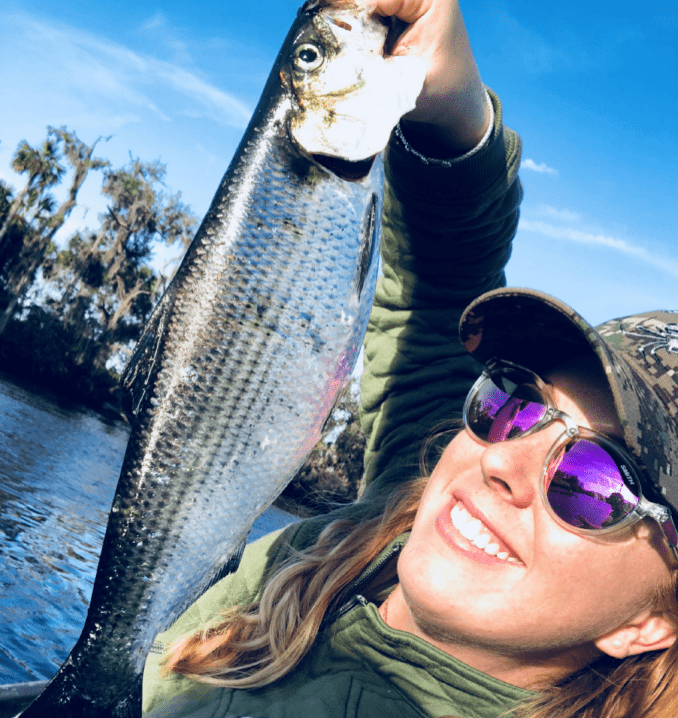Fishing Shad in Central Florida
By Kaiti Rae Adamson
George Washington and I have a few things in common; we’re both American, we’re both fishermen, and we both like shad fishing. George caught shad from the Potomac. I pursue shad in the St. Johns River. “Shad,” you’re probably thinking, “isn’t that a baitfish?” Not the shad George and I like to catch.
Every year, I eagerly look forward to the shad appearing in the beautiful St. John’s River of Central Florida. Shad make a splash in the river by showing off their sparkling fins in magnificent leaps from under the water’s surface. During the winter months, I enjoy the delightful opportunity to fish this unique species alongside the black crappie and the striped sunshine bass.
The number one question I am asked by an astonishing number of saltwater and freshwater anglers is, “What is a shad?” Because shad are here for such a short period of time, many anglers can miss their presence, and are unsure about the fish’s origins. Often, a shad is caught by mistake or misidentified because it is a short-term visitor in our waters. These fish can be easily caught right now in the St. Johns River called ‘Shad Alley’, between Mullet Lake Park and Puzzle Lake.
These hard fighters are an anadromous fish, meaning that they can live and grow in the ocean and then later travel into the freshwater to spawn. Due to rising spring temperatures, this species will travel from along the Atlantic seaboard from Labrador in the north, to Florida – returning to the waters from which they are born. The shad entering our waters marks the New Year for most anglers, arriving on the scene around Christmas and lingering into the beginning of spring. Shad here have a lifespan of about 4 years and will grow from 2 to 6 pounds.
American shad, hickory shad, and blueback herring are among the species that move into The St. John’s River and are classified as part of the Herring family. Shad can be identified by their rigid silvery sides, white scuttled bellies, and metallic green/greenish-blue backs. An American Shad will primarily feed on plankton, and small minnows or Perch but is known to strike shiny lures, jigs and flies.
I find success catching shad while trolling at 1.5 to 2.0 mph against the current and using small tandem Roadrunner jigs. I like to combine my jig heads with 1.5-inch black or chartreuse curly-tailed bodies, the small tails work best. Other popular color choices include white and fluorescent reds or yellows. This species can be caught by trolling, casting or with fly and will put up a surprising and fight on light tackle. Be careful with the mouths of these fish. The soft mouth of the shad is often the reason many anglers will find it challenging to land one.
The Central Florida Shad and Crappie Derby is a tournament created by The Orlando Coastal Angler Magazine that runs from November 1st until February 28th each year. The tournament is in its 9th year and is a great way for Anglers to connect with one another and share the annual fun in catching this feisty and unique species. Visit https://coastalanglermag.com/ orlando/shad-crappie-derby/ for details. Visit www.KaitiRae.com to catch my latest fishing tips and trips!
